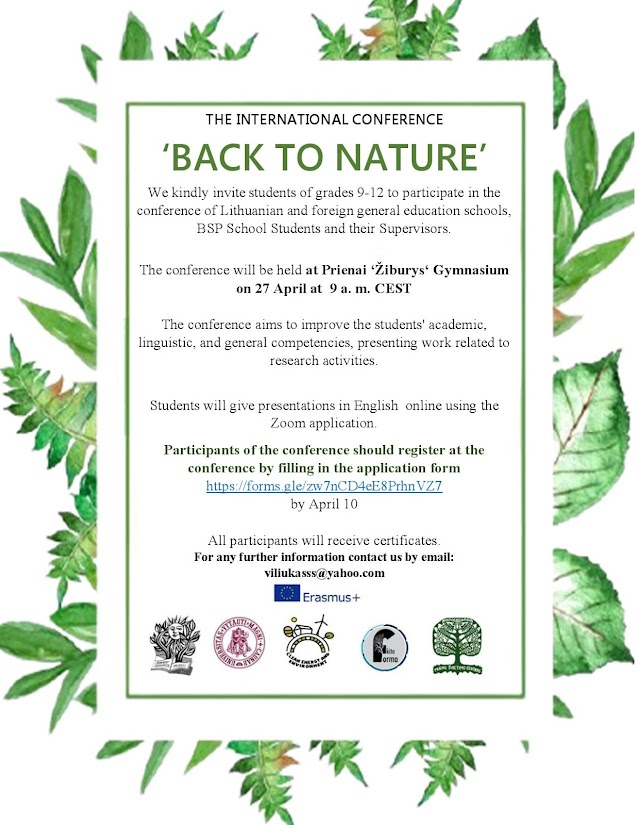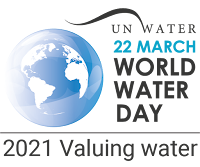International conference 'BACK TO NATURE'

April 27 (Tuesday) a remote conference "Back to Nature" will take place at Prienai "Žiburys" gymnasium. Beginning at 9 am Central European Summer Time. During the conference, participants from Lithuania and other countries (Italy, France, Spain, Greece) will present their research in English: scientific observations, experiments and research. The topic of the conference is climate change. We invite students of Baltic Sea Project, grades 9–12 (I – IV gymnasiums) of general education schools and their teachers to participate. Teachers and students will receive certificates. Those wishing to participate are invited until April 10 to register here: https://forms.gle/zw7nCD4eE8PrhnVZ7 More information: Rasa Kučinskienė, +37065643470, kucinskiene.rasa@gmail.com.


